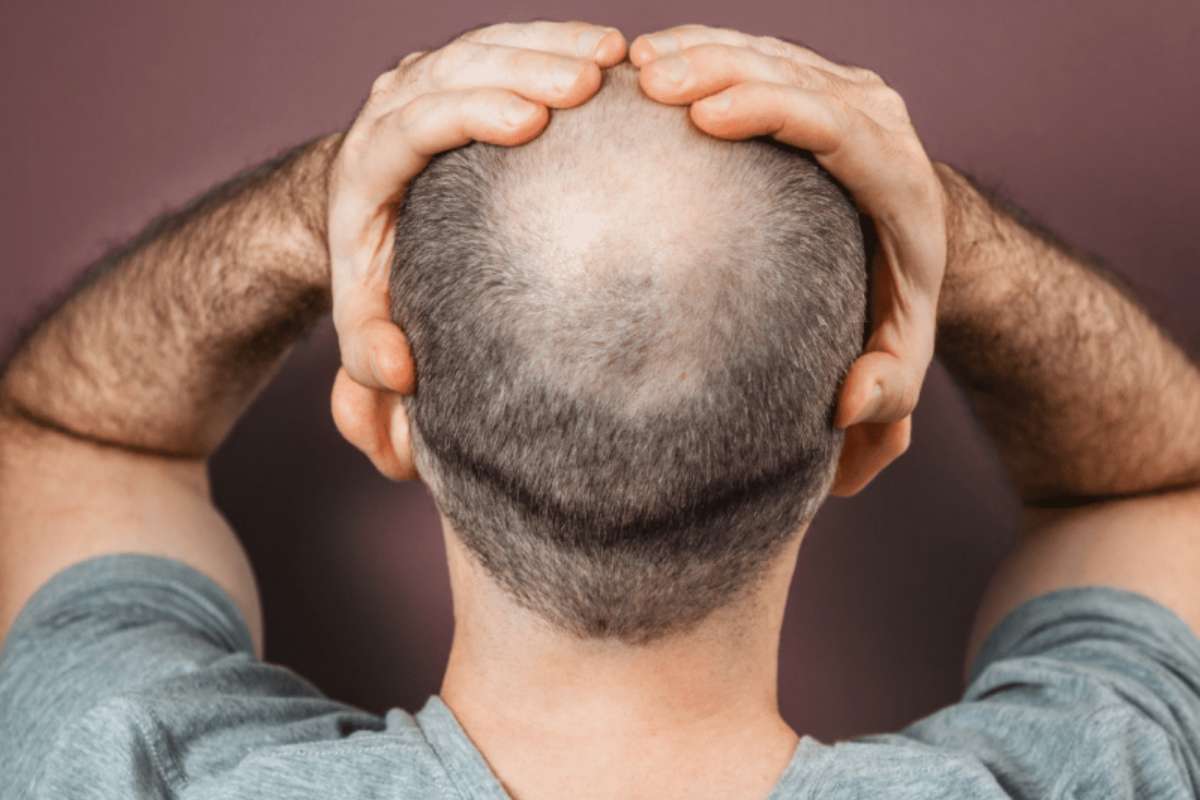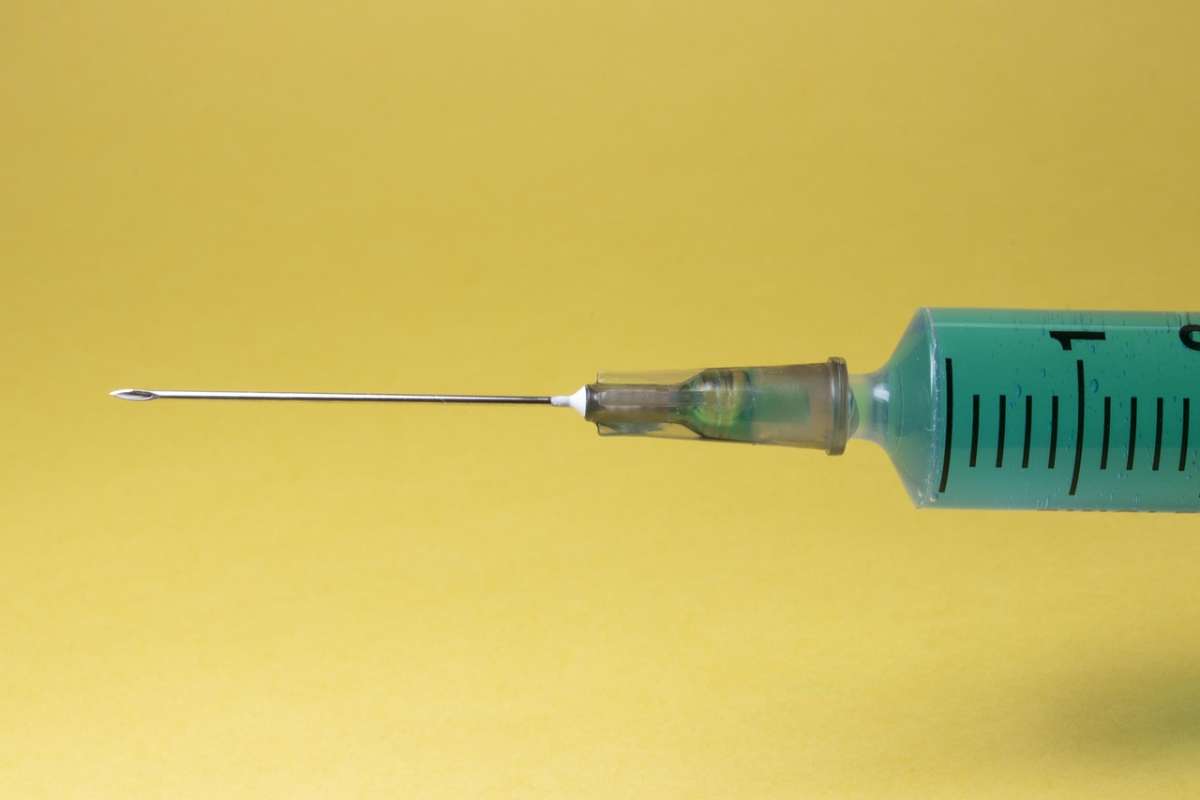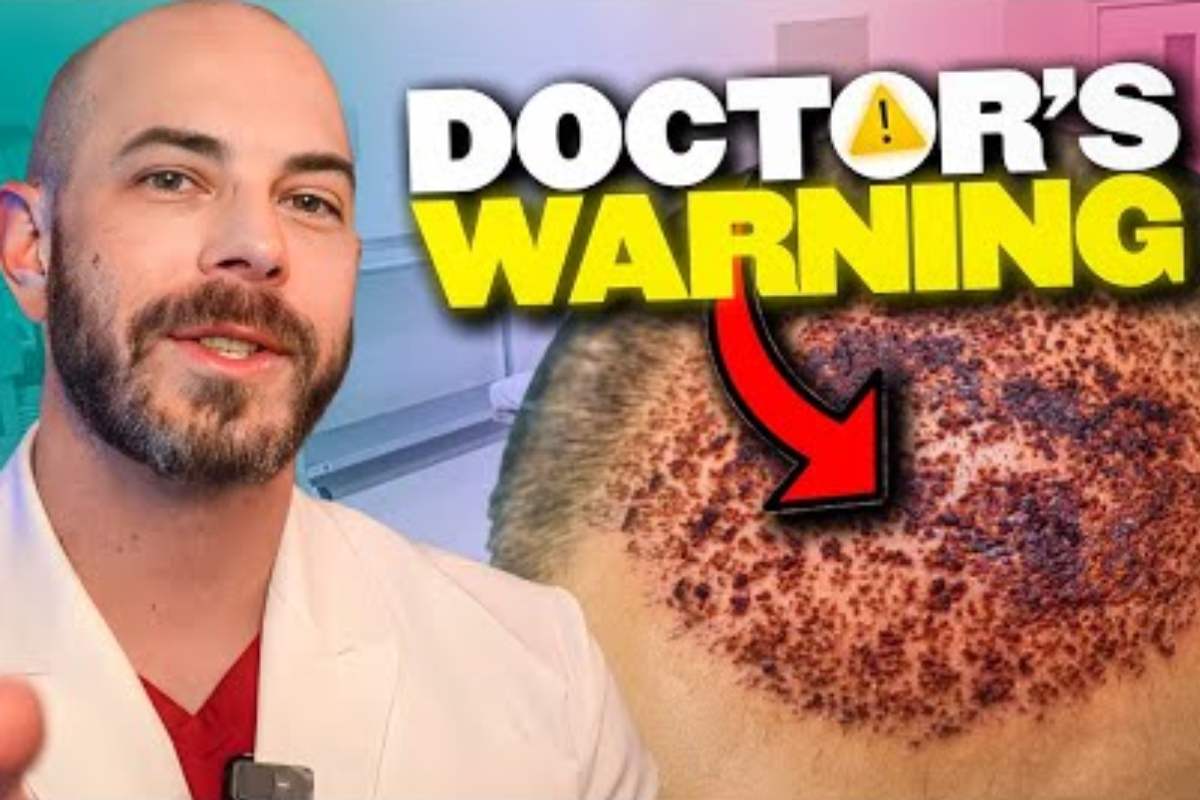Hair loss on the crown, the circular area at the back of your head, can be one of the most frustrating types of hair thinning. Many people don’t notice it until someone points it out or they see it in photos.
While a crown hair transplant can restore this bald spot and help you feel more confident, the results in this area often look a bit thinner than transplants on the front of the scalp. There’s a good reason for that and understanding it can help you set the right expectations and know when the time is right to treat the crown.
What Is the Crown, and Why Is It Different?
The crown, also called the vertex, sits on the back aspect of the top of your head. Hair in this area grows in a swirl called a whorl or cowlick. Because the hairs point in many directions, they do not layer over each other like the front of the scalp. This makes it harder to hide the skin underneath.
On the Norwood scale, which doctors use to describe male pattern baldness, the crown usually starts thinning around stage 3 vertex and can grow larger over time.
Early on you may see a receding front hairline and later the crown can form a round bald spot that expands and may meet thinning in the middle or front.
Why Crown Transplants Often Look Thinner
If you look at before and after photos, crown transplant results can appear less dense than hairline work. This does not mean the surgery failed. Rather, this perception is due to how the crown is shaped and how hair grows there.
1. The Crown Swirl Pattern
The crown has a spiral pattern. Hairs point outward in many directions rather than lying the same way. Even with planting many new hairs via a hair transplant, the hairs do not overlap as much, so more scalp can show through. This reduces the look of thickness compared to the front, where the hairs are typically all planted to grow forward (toward the face).
2. A Larger Area to Cover
Balding of the crown can affect a wide, round space. When patients chose (often rightfully so) to pursue a hair transplant to the frontal scalp first, the crown continues to progress in the background, especially in the absence of medical therapy. To fully fill a large crown would take thousands of grafts. Most people have a limited supply of donor hairs on the sides and back of the head. Surgeons plan carefully so you do not use too many grafts in one place and run short later. The realistic goal is good coverage, not teen-level density across a big circle.
3. A Conservative Approach
Doctors often use a careful, moderate plan for the crown, especially in younger patients. The crown hair loss tends to keep expanding. If it is packed too densely too early, you could end up with an island of hair later as the surrounding native hair thins. A moderate fill blends well now and saves grafts for the front and mid scalp, which affects your appearance more.
4. Slower Growth Timeline
Crown transplants often mature more slowly than the front. Hairline grafts commonly show strong growth by 9 to 12 months, while the crown may take up to 18 months for the final look. Early on it can appear fine or sparse, but be patient. Many people see a clear improvement between month 12 and month 18.
When to Treat the Crown
Timing is just as important as the method when it comes to a crown hair transplant. The right plan helps you protect your donor hair and keeps your results looking natural for years.
Start With Non-Surgical Options if Thinning
If the crown is thinning and not fully bald, most doctors suggest trying medications first.
- Finasteride is a daily pill that blocks DHT, the hormone that drives male pattern hair loss. It often works best in the crown and can stop further loss as well as thicken existing hairs for many men.
- Minoxidil is available in both topical forms (as a foam or liquid you put on the scalp) and oral forms (as a tablet you take once daily). It helps hair grow thicker and can slow shedding.
These treatments can (and often should) be used together to help stabilize the crown and may delay or reduce the need for surgery.
Wait Until Hair Loss Is More Predictable
For men in their early 20s, it is usually smart to wait. Hair loss can keep changing for years and a crown transplant too early can create an odd patch later. Many surgeons prefer to consider the crown around age 30 or when your pattern is clearer. That way they can plan how to divide donor hair between the front, mid scalp, and crown.
Focus on the Front First
Your hairline frames your face and makes the biggest day-to-day difference. In many cases surgeons will treat the hairline and mid scalp before the crown. Once those areas are stable and if there are enough donor grafts left, the crown can be filled in during a later session. This order helps your overall look stay balanced.
Consider Donor Hair Supply
Everyone has a limited donor supply, and the crown can use many grafts. If you spend too many there, you may not have enough for the front in the future. A sensible plan uses moderate crown coverage first, then adds more later if grafts allow.
Treatment Options for Crown Hair Loss
There are several ways to improve the crown, but the best choice depends on how much hair you have lost and what result you want.
1. Medications and Therapies
Finasteride and minoxidil are the most common non-surgical hair loss treatments. Some clinics (like ours) also offer minimally invasive procedures such as PRP injections, which use growth factors from your own blood to encourage hair growth. We also educate patients regarding low-level laser light therapy, which uses energy from laser diodes to support hair health from the comfort of your home. These methods are best for mild to moderate thinning and work as long as you keep using them.
2. Hair Transplant Surgery
A transplant moves permanent hairs from the sides and back of your head to the crown. There are two main ways to harvest those hairs.
- FUT removes a thin strip and then separates it into grafts.
- FUE removes individual grafts with a small handheld device.
Both methods can create a natural result in the crown. During surgery, the doctor will recreate your natural swirl so the hairs match your pattern.
Growth takes time, so be patient. Expect shedding in the first month, early sprouts around months 3 or 4, clear change by months 6 to 12, and full results closer to month 18. The big advantage is permanence. These hairs should keep growing for decades.
3. Cosmetic Camouflage
If you want a quick visual boost or are not ready for surgery, cosmetic options can help.
- Hair fibers or powders cling to hairs and the scalp to reduce the see-through quality.
- Scalp Micropigmentation places tiny dots of pigment on the scalp via a specialized tattooing process to create the look of more coverage or a short buzz cut.
- Hairpieces made for the crown can give instant fullness but need regular care and replacement.
These options do not stop hair loss but can improve the look right away and pair well with other treatments.
Crown Hair Transplants
Crown hair transplants can make a big difference. They often look a bit thinner than hairline work because of the swirl pattern, the larger area, the need for thoughtful planning, and a longer growth timeline. But even so, turning a shiny bald spot into natural coverage can change how you look and feel.
If you are just starting to thin, begin with a non-surgical option like finasteride and minoxidil to protect the crown. If loss is more advanced, a well-planned hair transplant can restore hair that lasts.
Many people do best with a mix of approaches. Medications help keep the hair you still have, while surgery fills in areas that are already bare.
At the Limmer Hair Transplant Center, we help you set clear goals, choose the right timing, and build a plan that protects your donor hair for life. With the right approach, we can help you can restore the hair on the crown of your head and your confidence, too.







